Four of the crew evaded capture and their stories below are from the official M.I.9 evader reports requested from the National Archive at Kew. During WW2 there were just 1,966 RAF evaders including 23 from 12 Squadron and four of them were from Lancaster ND424. These numbers are from the excellent book ‘RAF Evaders’ by Oliver Clutton-Brock.
All RAF flight crews were equipped with a button compass and a silk map of France to help them navigate if they landed in enemy territory. They were also issued with a number of French Francs to use if they were shot down. These items were devised and supplied by M.I.9. The following escape reports were compiled by M.I.9 during interviews in London following their return to the UK. The dates of their interviews are in brackets.
- Leslie Faircloth (10 August 1944).
- David Davies (28 July 1944).
- Bob Yates (6 September 1944).
- John Stephen (29 August 1944).
Leslie Faircloth – Mid-Upper Gunner (Evader)
The following journey details have been transcribed from the official escape report M.I.9/S/P.G.(-) 2069 (National Archive document reference WO 208/3321 report 2069). The document was compiled by M.I.9 at Leslie’s debriefing in London on 10 August following his return from Gibralta in an RAF Dakota transport aircraft. The figures in brackets are map references added by M.I.9.
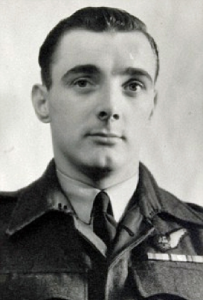
The details of my take-off up to the time of bailing out on 28 June are as related by my flight engineer, Sgt. DAVIES (S/P.G.(-) 2059).
I landed in a field somewhere S.W. of PARIS and after walking about 100 yards hid my parachute, harness and Mae West. I walked for about an hour in a south westerly direction, and then lay low till daylight. I continued walking West, but about mid-day changed my mind and turned due East.
At about 1800 hrs (28 Jun) I saw a man working on a small allotment. I approached him and made my identity known. I had previously removed my battle dress and was in shirtsleeves. I found I was at GIF (N.W.EUROPE 1:250,000 Sheet 7, R 8926). The man hid me in a hut, left me, and returned an hour later with food and wine, some old overalls, and a coat. I stayed in this hut that night and the whole of the next day and night. During this time the man brought me food and some straw to sleep on from his sister-in-law’s house, which was in the neighbourhood. On 30 Jun the man and his wife took me to PARIS by train. They took me to their own house. On 30 Jun my host took one of my escape photos, and on 1 Jul a police inspector turned up with an identity card for me (my own photograph had been used) and a “carte de travail”. He returned on 2 Jul with a young man, who brought me a bread card.
On 5 Jul, I was taken to the Gare de LYONS. My host bought me a ticket to PERPIGNAN, and at 2100 hrs I boarded the train for PERPIGNAN, without any escort. I was on this train for five days. Our route was:- NEVERS (FRANCE 1:250,000, Sheet 22, N 62) – MOULINS (R 77). We reached MOULINS at about mid-day 6 Jul, where a German officer and three N.C.O.’s boarded the train for inspection of identity cards. Mine passed muster without any comment.
We left MOULINS at about 1300 hrs and travelled via VICHY – CLERMONT FERRAND (Sheet 26, W 58) to LANGEAC (Sheet 31, G 91), which we reached at 1700 hrs 6 Jul. Here there was a hold-up till 8 Jul. We then continued via ALES (same as ALAIS (Sheet 36, J 30) and NIMES (Sheet 37, S 67).
On the way I was spoken to by a girl who, after some questioning, spotted me as being an Englishman. She was travelling with a member of the Maquis. The girl changed trains, but the man accompanied me on the train via MONTPELLIER (Sheet 41, s 24) to BEZIERS (R 71 and NARBONNE (W 59). We did not reach NARBONNE till 10 Jul. The people in PARIS had only given me food for one day. My new helper took me to his house at NARBONNE, and I was given a meal. He then took me back to the train, and I continued to PERPIGNAN on my own. My host in PARIS had given me the address of a hotel manager at PERPIGNAN. I found the hotel, and the manager passed me on to another café, who in turn passed me on to yet another café, but nobody could help me.
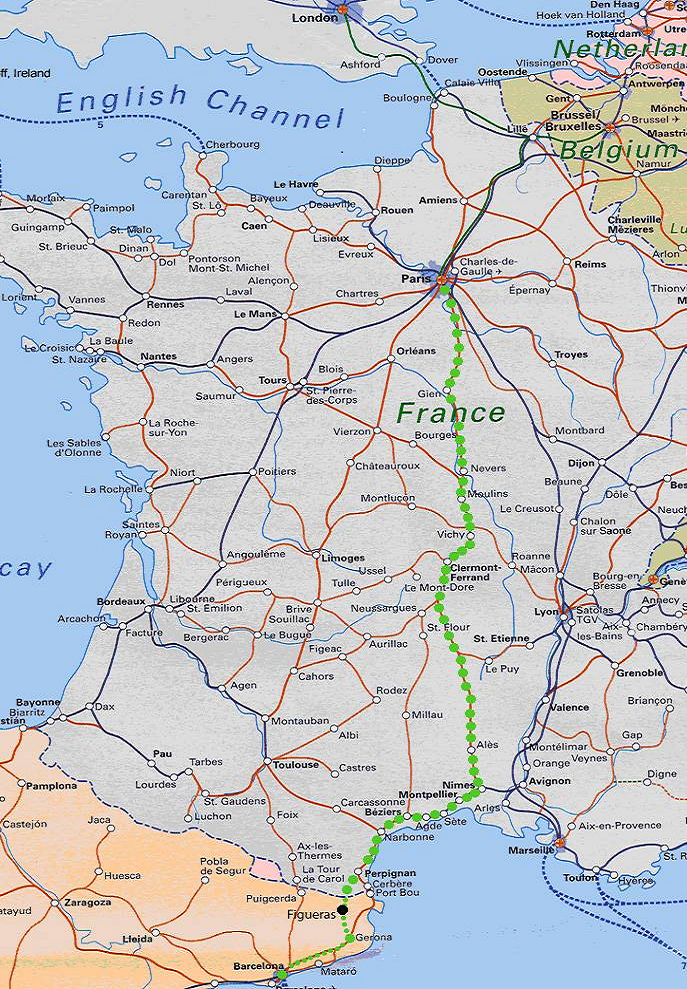
I decided to try and cross the PYRENEES on my own, and on 11 Jul walked inland towards THUIR (IBERIAN PENINSULA, 1:250,000, Sheet S 0880, G 2842). Then turning South, after having slept on the night of 11 Jul in the woods, to a point between LE BOULOU (G 33) and CERET (G 22). Here I was approached by a man who asked me if I was English. Being hungry and thinking he wanted to help me I said “Yes”, and he took me to a house. He disappeared and within ten minutes I saw him returning, followed by two Germans with rifles. I immediately left by the back door for the woods. I saw the Germans enter the house and come out and search the woods behind.
I turned S.E. and after sleeping somewhere near CERET crossed the frontier on 13 Jul and continued West of LA JUNQUERA (G 41) to PONT DE MOLINS (G 40), where I was picked up by a party of Spanish militia on Patrol. I told them I was a member of the R.A.F. and they took me to their headquarters, where I stayed the night of 13 Jul. They escorted me next day to FIGUERAS (G 40), where I was taken to the fort and after a brief interrogation to the prison (14 Jul).
I remained here until the evening of 19 Jul, when I was rescued by the British Vice-Consul from GERONA. I stayed under parole in GERONA in a hotel, and on about 20 Jul taken to BARCELONA and from here via ALHAMA (staying till 28 Jul) to MADRID (staying till 7 Aug), and then to GIBRALTAR, leaving GIBRALTAR on 9 Aug and arriving WHITCHURCH 10 Aug.
Further Information
The French patriot who found Leslie and provided him with an incredible amount of help was Monsieur Louis Cotan. Louis took Leslie to his apartment in Paris at 21 Passage Gatbois, Paris XII. Louis wrote a letter dated 20 December 1944 asking if Leslie had returned home safely. He provided Leslie with food, shelter, false identity papers and a train ticket to Perpignan.
The forged French papers identified Leslie as Jean Henri Lebrun aged 19 of Savigny Sur Orge (Seine et Oise). While on the train to Perpignan these papers were examined by German soldiers and ‘passed muster’ without comment. The papers may have been forged but they were from an official source as they were provided by the French Police Inspector who visited Leslie at the Cotan apartment in Paris.
Leslie’s parents received two telegrams from the Air Ministry Casualty Branch and we still have them. The first was dated 4 July 1944 telling them he was missing in action and the second dated 28 July 1944 telling them he was safe and in a neutral country.
Leslie’s escape money was confiscated by the Spanish Militia when he was arrested in Spain. The British Vice Consul gave Leslie some money (around £12) for essentials while in Spain waiting to get home. Some months later Leslie received a letter from H.M. Government asking for the ‘loan’ to be re-paid.
Leslie flew back from Gibraltar to Whitchurch airfield near Bristol in an RAF Dakota containing some “VIP’s” and he sat between the long-range fuel tanks. He was debriefed in London by M.I.9 but no one said he had to stay so he wandered out and went home to Thornton Heath but returned the following morning. When he arrived home he didn’t use the key on a string to open the door but knocked instead. Leslie’s father opened the door and cried when he saw him.
As Leslie had used the Irvin parachute he applied for and became a member of the Caterpillar Club. This exclusive club was formed by Leslie Irvin the founder of the US parachute company. Leslie received a letter and Caterpillar badge from Leslie Irvin dated 8 December 1944.
David Davies – Flight Engineer (Evader)
The following journey details have been transcribed from the official escape report M.I.9/S/P.G.(-) 2059 (National Archive document reference WO208/3320). The document was compiled by M.I.9 at David’s debriefing on 28 July following his return to the UK. The figures in brackets are map references added by M.I.9.
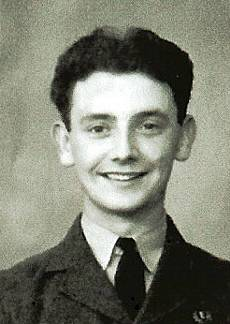
I was a member of the crew of a Lancaster aircraft which left WICKENBY on 27 June 44 about midnight to bomb railway marshalling yards S.E. of Paris at what I think was VAIRES-SUR-MARNE (N.W.EUROPE, 1:250,000, Sheet 8, S 2643).
On the outward journey one engine failed. We reached the target, however, on three engines and bombed it. We had just turned homewards, when we were hit by Flak, and two more engines were put out of action. It was obvious that we would not be able to remain airborne, and the pilot gave orders to bale out at about 0330 hrs (28 June).
I landed in a field somewhere S.W. of Paris and as there was much movement on the roads, I hid my parachute, Mae West, and harness, and made off quickly in a South-Westerly direction. I walked for about an hour, then rested in a field, and continued walking for another 20 minutes. I saw a girl picking cherries, approached her, and made my identity known. She went indoors to fetch her parents, and I was taken into the house and kept there until about 1800 hrs. This was at BIEVRES (Sheet 7, R 9532). I was given food and allowed to rest, but was not given civilian clothes. My host advised me to try and make for our lines near CAEN, but I thought it would be impossible to cross the German lines, and headed South.
I walked till about 2300 hrs and then slept in some woods. I continued next morning in a South-Westerly direction and eventually reached DOURDAN (R 70). The people at BIEVRES had given me enough food to last four days, and I obtained and occasional drink of wine at odd farms (locations not known).
I made for the main road and eventually reached ORLEANS (FRANCE 1:250,000, Sheet 15, W 64). During this time I slept in woods and appealed to nobody for shelter. I walked through ORLEANS at about 2000 hrs on what I think was 1 Jul. A few kilometres past the town I slept in a barn, but nobody saw me.
I continued South and, probably on 4 Jul, reached LAFERTE-St.AUBIN (Sheet 15, F 7003), where I approached a man who took me to some patriots in the village (name not known). The patriots gave me clean socks and food. I left these people at about mid-day and eventually reached a small farm near NEUNG (L 6083). I made my identity known here and was taken in for two days (name of people unknown).
Whilst here I met a member of the Maquisards, who took me to meet some twenty other members in the woods. These told me of an R.A.F. sergeant bomb-aimer called PEARCE, Merlin, from PONTYPRIDD, who had joined one of their groups some time back, asking me if I knew what became of him. (For PEARCE’s report see S/P.G.(.) 1505).
The leader of this group advised me to continue South towards ROMORANTIN (L 56). I went round ROMORANTIN, and as the bridges at the CH7ER River were guarded, I swam it. I approached a farm somewhere North of VALENCAY (Sheet 21, L 4240). I was allowed to shelter in the granary and next morning (about 7 Jul) given a bicycle (name of people unknown). I cycled to CHATEAUROUX (L 50), rode through ARGENTON-SUR-CREUSE (Q 37), took the turning towards ST. BENOIT (Q 26). About eight kilometres North of St BENOIT I approached a house in a very small village and asked for help, and from this point I was assisted on my journey.
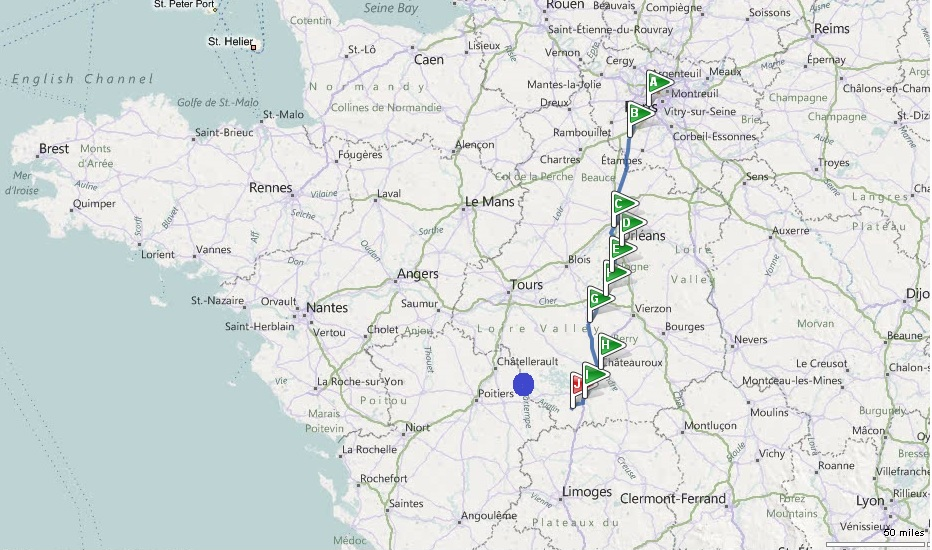
Further Information
The ‘Conscript Heroes’ web site http://www.conscript-heroes.com/MI9-05.html contains the following entry for Sgt Hugh D Davies (3320 2059): “returned by SD Hudson July 44 Op Tenerife”. This describes David’s journey back to the UK prior to his interview with M.I.9 on 28 July.
“SD Hudson” refers to an RAF Lockheed Hudson used by SD (Special Duties). SD and SOE (Special Operation’s Executive) were involved in the clandestine operations that included dropping or landing trained agents in enemy occupied Europe. They landed a range of aircraft in remote areas, sometimes right under the Germans noses. They also undertook supply drops of arms, ammunition and explosives, for use by the resistance fighters. One of the most well known airfields for these types of operations was RAF Tempsford in Bedfordshire and its resident 161 (SD) Squadron. 138 (SD) Squadron were also based there. They flew Whitley, Lockheed Hudson, Handley Page Halifax and Short Stirling bombers, and also Westland Lysanders. They were also known to have used North Weald and Stapleford Abbots in Essex, Stradishall and Newmarket in Suffolk as operating bases.
‘Conscript Heroes’ also has reference to an escape report for fellow Welshman Merlin Pearce mentioned above and some of his evading crew (e.g. 3315 1504 (-) Sgt John McCallum):
Report Ref 3315 1505 (-). Sgt M Pearce. 10 Squadron Halifax JD368. FTR Nuremburg Aug 43 – Bourgogne.
Halifax JD368 (ZA-A) of 10 Squadron was lost returning from an operation to Nuremburg on 27/28 August 1943. The entry is from http://www.lostbombers.co.uk/bomber.php?id=9222.
This aircraft was part of a batch of 350 Handley Page HP59 Halifax Mk.11 built by English Electric Co. At Salmesbury and Preston, and it was deliver in July 1943. It was airborne at 2049 27 August 1943 from RAF Melbourne (South Yorkshire). Homebound it was shot down by a night-fighter and crashed at 0330 at Haulchin (Hainaut), 12 km south-east of Mons in Belgium.
- Sgt. G. Baker Evd
- Sgt. R. W. Cornelius Evd
- Sgt. J. McCallum Evd
- Sgt. V. W. Davies Evd
- Sgt. M. Pearce Evd
- Sgt. G. R. Darvill PoW
- Sgt. G. R. M. Warren RCAF KIA.
Sgt. Warren is buried in Gosselies Communal Cemetery. Sgt G.R.Darvill was interned in Camp 4B, PoW No.250703.
Bob Yates – Wireless Operator (Evader)
The following details have been transcribed from the official escape report M.I.9/S/P.G.(-) 2321 (National Archive document reference WO208/3322 report 2321). It is assumed the document was compiled by M.I.9 at Bob’s debriefing in London on 6 September following his return from Paris after it was liberated. The figures in brackets are map references added by M.I.9.

I took off from WICKENBY in a Lancaster aircraft at 0015 hrs. on 28 Jun 44. At 0300 hrs I baled out and landed near ORSAY (N.W. EUROPE, 1:250,000, Sheet 7, R 92). After burying my parachute, harness and Mae West in a ditch I started to walk to PARIS but gave up due to injuries to my leg muscles and back sustained in the fall from the aircraft. I hid in a corn field till 29 Jun and then walked to ORSAY (R 92) where I hid under a haystack in a field. I awoke to find French peasants standing over me and was given food and water. Later I received clothes and a note in English telling me to wait till dark. I was then interviewed by a Frenchman who gave me food and shelter and contacted the organisation.
Approximately one week later a member of Resistance group escorted me to PARIS by metro. I stayed there for five weeks until approximately 9 Jul, when I was escorted to the Palais Royal gardens and met a member of the Resistance movement who took me to VANVES (S 03). Whilst staying here I saw an R.A.F. man shot by the Germans whilst descending by parachute. I found out later that his name was Sgt. HOWELL.
On approximately 15 Aug I was escorted back to PARIS and stayed there until it was liberated and on 4 Sep 44 I came back to ENGLAND.
John Stephen – Bomb Aimer (Evader)
John Stephen was an evader but there was no file reference in the book ‘Bomber Command War Diaries 1944’. The crash report for ND424 has cryptic hand-written note alongside his name that he was “ – seen Me??? 28 Aug”. Is it a place, a name? Further searches of the National Archive eventually found an evader report for John in September 2010: Piece reference 3321 2182 (-) “F/Sgt John S J Stephen, 12 Sqn, Lancaster ND424, FTR Vaires June 44 – sheltered at Bures-sur-Yvettes until August 1944”. The original M.I.9 file reference is M.I.9/S/P.G.(-) 2182. The following details have been transcribed from the report. The document was compiled by M.I.9 at John’s debriefing in London on 29 August 1944 following his return from France. The figures in brackets are map references added by M.I.9.
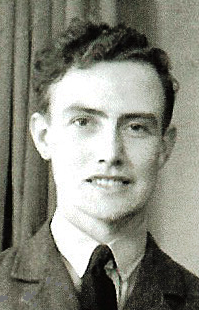
We took off from WICKENBY 28 Jun 44 at approx. 0030 hrs to bomb VAIRES. On the way out there was an oil leak in the starboard outer engine, and after bombing our target two of the engines gave out and we had to bale out. Just before touching ground my parachute hit some high tension wires, and I was left hanging about five feet from the ground. I released myself and landed close to a wood South of VILLEBON-SUR-YVETTE, (N.W.EUROPE 1:250,000, Sheet, R 9626). I went into the wood and buried my Mae West.
I slept that day in the woods and in the morning started to walk West. I walked West all day and slept in a wood the following night.
On the morning of 29 Jun I called at a house on the outskirts of BURES-SUR-YVETTE (R 9125). The lady of the house took me in and gave me food, and I stayed there until 27 Aug, when I went to CHEVREUSE and contacted the Americans who sent me back.
Further Information
John spent two months at the house in Bures-sur-Yvette, south west of Paris. He then travelled a few miles to Chevreuse and made contact with the US Army. The heading of the escape report says that he left Banville on 28 August 1944 and arrived in RAF Northolt on the same day. Banville is north-west of Caen in Normandy, near the coast, and Northolt is just west of London.
